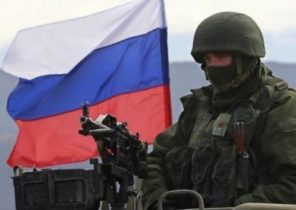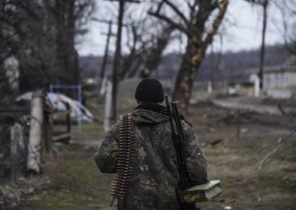80 years ago, the world breathlessly followed the fall of France under Nazi attack. Meanwhile, at the other end of the European continent, were events, in which Ukraine was annexed Western districts of Odessa region and Northern Bukovina (now Chernivtsi oblast). According to one version, these events have encouraged Adolf Hitler to attack the Soviet Union. But is it really?
“Country” recalls how in 1940 Ukraine has grown new territories.
1. Did the Soviet rights to Bessarabia?
In today’s story all the territorial acquisitions of the Soviet Union 1939-40 — Western Ukraine, Western Belarus, Estonia, Latvia, Lithuania, and Moldova — and put on a par, making the differences between them. Although the situation of Bessarabia — the current Western districts of Odessa region and Moldova — is significantly different from the rest.
Galicia before the First world war was part of the Austro-Hungarian Empire; Volhynia and Western Belarus was part of the Russian Empire, and Galicia, according to the results of the Soviet-Polish war of 1920 was given to the poles. Latvia, Lithuania and Estonia until 1918 was part of the Russian Empire, but then gained independence, which is recognized, in particular, Soviet Russia.
The situation of Bessarabia was completely different: in 1918 annexed by Romania, but Soviet Russia and the Soviet Union, this annexation was not recognized. On Soviet maps 1920-30-ies it was drawn almost on the same principle as today on the Ukrainian map of Crimea: the same color as the territory of the Soviet Union, but shaded. So from their rights to Bessarabia Moscow never refused.
2. Did Romania’s right to Bessarabia?
This question is similar to the question “does Turkey right to the Crimea”. In the middle ages there was the Moldavian Principality, part of which was the current territory of Moldova. However, it ceased to exist in the same middle ages, when Russia was still the Moscow government and in the Affairs of South-Eastern Europe did not participate.
The Russian Empire annexed Bessarabia in 1812, having won it from Turkey. In European history it was a moment similar to the one that happened in 1940, almost the entire continent was under the domination of Napoleonic France, or the vassals from it, and Russia during this period signed a forced Alliance with Paris and used the situation to expand the territory, having won from the Turks, Bessarabia and the Swedes — Finland.
No claims of Romania to Bessarabia was not there, because it was not Romania itself: it then belonged to Turkey. Only in the 1830s as a result of another Russo-Turkish war was established two principalities — Moldavia and Wallachia, formally belonging to Turkey, but is actually ruled by Russia. And only in the late 1850s, after the Crimean war, St. Petersburg has lost the control over these principalities, which were United to Romania.
But neither then nor later was the issue that part of this state includes at least the Moldovan part of Bessarabia. The history of the two parts of the ancient Moldavian Principality broke up in the early 19th century, when Romania did not exist, so its historical rights on the Russian territory and speech could not be.
3. As Romania occupied Bessarabia?
At the beginning of world Romania was the country that waited to determine which side will be stronger, to join the war on this side and get their share of the spoils. In 1916, Bucharest decided that the better chances of the Entente, and declared war on the countries of the Quadruple Alliance — Germany, Austria-Hungary, Turkey and Bulgaria.
However, the ambitious plans turned into shame: the Romanian army was quickly defeated, German troops occupied three quarters of the territory of Romania, and to save the situation of the Russian army, stretching his already long front.
But when in Russia the revolution began, Bucharest decided to profit at the expense of a weakened ally. In January 1918 the most part of the territory of Bessarabia was declared as the Moldovan Autonomous Republic and the local Council raised the question of the accession of Romania. To ensure the effectiveness of voting, the Council building was surrounded by Romanian troops.
As soon as the vote was held, Bucharest took Moldova to Romania, and the autonomy was liquidated. A little later the strength of the Romanians recovered from the Odessa Soviet Republic, some of the southern districts of Bessarabia, also attaching them to its territory.
Britain, France and the United States recognized the annexation de facto, based on the ethnic proximity of Moldovans and Romanians (about the multinational composition of southern Bessarabia decided not to remember). But even 22 years later, when the Bessarabian question became topical again, the American media with reference to sources in Bucharest, wrote: “the Romanians knew that Bessarabia sooner or later have to pay”.
4. Did the Soviet Union rights to Bukovina?
Somewhat different was the situation in Bukovina, the more that the earth itself was mixed. Already from the name it is clear that initially the territory of Bukovina was inhabited by the Eastern Slavs, but gradually, this area was ruminatively. After its annexation to the Austrian Empire in the 18th century, the process stopped, but by the early 20th century Bukovina was actually split into two parts: in the South the majority were Romanians, in North — Ruthenians (i.e. Ukrainians).
So, when in autumn 1918 Austria-Hungary collapsed, the southern Bukovina announced the accession of Romania and North — Western Ukrainian people’s Republic. But Bucharest wanted to get their hands on everything, and ZUNR was busy with the war with the poles and to join in yet another war decided not to. So everything went according Bessarabian scheme: first the invasion, then the decision of the local authority, and in the end, the Royal decree on the annexation of territory without any autonomy rights.
So in fact, and Bessarabia and Northern Bukovina Romania acquired one law — the law of the strongest. However, in 1940, in contrast to 1918, the right of the strongest was already out of Bucharest, and Moscow.
5. Pushed Moscow Romania into the arms of Hitler?
Now the events of June 1940, construed in such a way that the Soviet Union to its requirement of Romania pushed her into the arms of Nazi Germany. Events are described so: the Soviet Union issued an ultimatum, Bucharest to mobilize, and appealed to Berlin, but the Germans occupied in France, invited the Romanians to agree (with the requirement of the Soviet Union — approx. ed.). And hinted that he will return then, when the war with the Soviet Union.
But in fact, the chronology of events was quite different. And the key role they all played not the position of the Soviet Union and the fall of France.
Romania since the mid-19th century were, so to speak, the Anglo-French project and has been focusing on London with Paris (which, however, did not prevent sometimes to flirt with the Berlin and Vienna). It is through the efforts of the British and the French in 1918-19 was legalized to join Romania not only Bessarabia, Northern Bukovina, but also belonged to the Austro-Hungarian Transylvania and Banat, areas in which the relative majority were Hungarians.
When in may 1940 began the defeat of France, throughout South-Eastern Europe began fermenting. Its troops to the borders of Romania moved not only by the Soviet Union, but Hungary, who realized that there was a chance after the return of Transcarpathia and Transylvania, and even Bulgaria, in which Rumania in 1913 took South Dobrogea black sea.
But the Romanians have understood that have lost their patrons, and because at the end of may — four weeks before the Soviet ultimatum sent a delegation to Berlin to test the waters about getting a new patronage. And already in the first days of June — three weeks before the Soviet ultimatum, the media reported on the resignation of the Minister of foreign Affairs of Romania Gafencu, which meant a change of foreign policy course of the country.
23 June 1940, it became known that the king of Romania Carol issued a decree on the introduction of the one-party regime in the country, and then was issued the first decree, which, following the example of Germany, have introduced legislative restrictions for Jews. And only three days after that, the head of the Soviet government Vyacheslav Molotov presented the Romanian Ambassador with a note demanding the transfer of Bessarabia and Northern Bukovina.
June 27, foreign Minister Ribbentrop was transferred to Bucharest a telegram in which he was advised to cede to the Soviet Union. Similar responses of the Romanian authorities received from Rome and from allies Minor allies, Yugoslavia and Greece.
June 28, Bucharest agreed to the ultimatum of Moscow and on the same day announced… mobilization. However, as noted by the American media, mobilization was not caused by the conflict with the USSR, and the anticipation of war with Hungary, which concentrated troops in the Carpathians for the solution of the Transylvanian question.
Transylvanian issue was solved in favor of Hungary in August, and the dispute over the southern Dobruja to Bulgaria in September 1940. Thus, Hitler advised the Romanians to cede not only the Soviet Union but to all other neighbors. And there was no promise to restore Bessarabia, Bukovina after the war with the Soviet Union: Berlin just took revenge on Bucharest for long-term orientation towards Britain and France.
Therefore, the argument about the fact that Stalin himself had set Romania against the Soviet Union and pushed her to take part in the war on Germany’s side, not true: if it were not for the Bessarabian question, and was only the fall of France and the claims of Hungary and Bulgaria, Bucharest similarly shifted would be in Berlin and would participate in all plans of Hitler, as was the case with Hungary and Slovakia.
6. Did Bucovina reason to fear Hitler?
The above quote is from the “new York times” about the reaction of the Romanian authorities on the Soviet ultimatum completely was: “Romanians realized that Bessarabia sooner or later have to pay, but the demand for the Bukovina was a surprise to them”.
The Romanians do not expect this step of Moscow, because, unlike Bessarabia, Northern Bukovina never Russia did not belong. Most likely surprise this was for Hitler, as in the secret protocols to the agreements of August-September 1939, signed by Germany and the Soviet Union, it was only about the interest of the Soviet government in Bessarabia.
From this was born the version according to which it is the request of Stalin to the Romanians on the transfer of Northern Bukovina was the reason that in July 1940, Hitler ordered the development of a plan of attack on the Soviet Union. This version sounded again, but it is most concentrated — in the works of Viktor Suvorov (Vladimir Rezun) about the year 1941. Suvorov cites two main arguments in favor of his version:
— first of all, on the territory of Northern Bukovina, Stalin received a railway with narrow European gauge and a large number of locomotives and wagons for her that was necessary for an offensive in the West;
— secondly (and this is important), annexing Bukovina, Stalin was dangerously close to the only major source of oil in Europe, located near the Romanian city of Ploiesti. And now, in the event of an attack, the Soviet leader had the opportunity in the first hours of the offensive to deprive the German army with fuel, which led to her inevitable defeat.
Version looks relatively straightforward — as long as you look at a map of Romania. Ploiesti is located in southern Romania, and the distance from it to the administrative centre of Northern Bukovina Chernovtsy — 480 km. At the same time distance from Ploiesti to the administrative center of Bessarabia Kishinev — 394 km, while the most Western point of Bessarabia Reni — 220 km And if that was supposed to scare Hitler is not the seizure of Northern Bukovina by the red Army, and the annexation of Bessarabia.
However, the interest of Moscow to Bessarabia Hitler knew in August 1939 from the minutes, signed by his Minister Ribbentrop. It turns out that in August 1939, the führer was afraid that Soviet troops will move to Ploiesti for a distance of 220 km, and in June 1940, after defeating France and removing the threat of war on two fronts, he was afraid that the Red Army was at a distance of 480 km from Ploiesti!
The argument about narrow gauge and rolling stock of Northern Bukovina, too, seems logical at first glance. All of this Stalin was indeed captured, but nine months before he is in even greater numbers received from narrow gauge cars and locomotives in Eastern Poland — but instead of the concentration of rolling stock for an offensive in the West this rut began to alter under a Soviet standard.
In addition, if Northern Bukovina had such strategic importance, and the striking force of the red Army had to be kept there. However, she wasn’t there — simply because there was no border with the territories occupied by Germany.
So Hitler had nothing to fear in June 1940. The order about the preparation of the attack on the USSR in July of the same year he gave a very different reason — being confident in the defeat of the Soviet Union until the final victory over Britain. To the Bukovina and Bessarabia is nothing had.
7. What lost Ukraine in the summer of 1940?
Since the Soviet Union did not recognize the Romanian occupation of Bessarabia, in 1924 it was decided on the establishment of the Moldovan Autonomous Republic within the Soviet Ukraine. Until 1929 its capital was Balta, and then pre-1940 — Tiraspol.
Autonomy is only nominally called Moldovan: suffice it to say that in Balta and Tiraspol, the Moldovans accounted for only six percent of the population (in total, there were 30%). But politically this was necessary to facilitate the substantiation of claims on Bessarabia.
In 1940, these claims have been implemented, and a large part of Bessarabia became part of the MASSR. The leadership of the Moldovan autonomy wanted to do all of Bessarabia, but met the resistance of Kiev. In the result, Balts’kyi district gave the Odessa region and Izmail, Reni and Bolgrad district did Akkerman oblast, Izmail and later and eventually joined the Odessa.
But the main area of the Moldavian autonomy together with Tiraspol, was seized from Ukraine, it created a separate Union Republic.
The consequences of this decision was evident half a century later, when in Chisinau, came to power Pro-Romanian forces, announced the romanization of the alphabet and the policy of Anschluss with Bucharest. Started one of the first armed conflict on the territory of the former USSR, and it was the only time on one side (on the side of Transnistria) fought together Ukrainian and Russian nationalists.
And no wonder: according to the last census, nearly 60% of the residents of the unrecognized state — Ukrainians and Russians. This PMR is the only, except for Ukraine, a country where the Ukrainian language (along with Russian and Moldovan) is the state.







